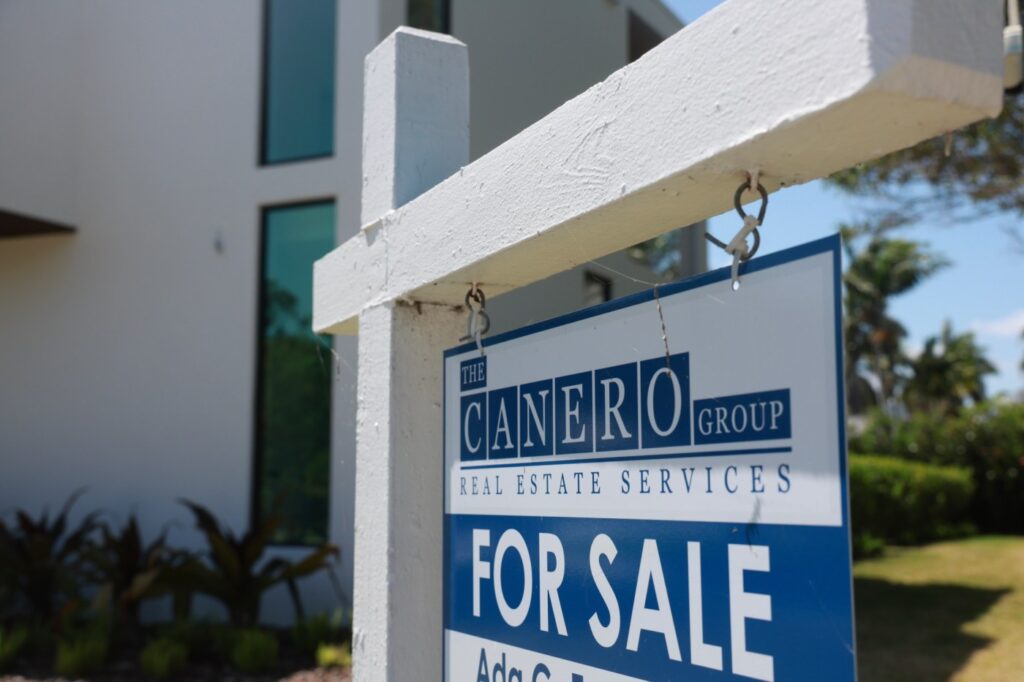
The National Association of Realtors’ $418 million antitrust settlement agreement includes a component to end the practice of listing brokers setting and posting the buyers’ broker commission on the local Multiple Listing Service.
The goal is to reduce the cost of real estate sales transactions, as the U.S. has the highest transaction cost in the world. It also aims to reduce buyers’ agents from steering their clients to properties with a higher commission split for themselves.
Here’s an example: Two listed properties are on the market for $1 million. Listing 1 offers the buyers’ side 2% ($20,000) commission, and Listing 2 offers 1% or $10,000. Some agents will steer their buyers to the 2% listing only as it serves their own interests with higher compensation.
Also see: What’s next for the housing market?
“Projections of lower prices are totally off base. Sellers will keep the difference,” said Patrick Veling, CEO Real Data Strategies. “Falling commissions does not mean lower prices.”
Assuming the settlement is court confirmed, starting in July, buyers will be forced to negotiate compensation with the buyers’ broker for all the tasks involved in landing a home for the buyers. Posting buyers’-side commissions on the MLS will be banned.
Also see: Realtor settlement brings confusion, relief to Southern California’s real estate industry
Houses hunters also can opt to buy directly from the listing agent, which is called double-ending.
California law requires an agent’s fiduciary duty to represent its client. As a practical matter, it’s impossible to do your best for the seller and the buyer if you are representing both sides.
“I can’t negotiate with myself (double-ending),” said Meredith Drews, an agent at Keller Williams. “Pick one agent to work with through a buyers’ broker agreement, which is similar to a listing agreement.”
More on housing chill: Why California owners aren’t selling? Maybe they like their homes
Please note, there are plenty of excellent agents who have double-ended deals, being fair to all sides. Sometimes you just do what you must do as a buyer to get in.
Wealthy buyers may pay for these services. It’s doubtful anyone else will be able to or want to come up with the money to pay a buyers’ agent.
Consider first-time buyers scraping by with low payments, for example. They will default to contacting the listing agent directly. Increasing the mortgage to finance agent commissions, by the way, is prohibited.
“I don’t think house prices will come down (NAR settlement terms) with the scarcity of inventory,” said Phil Immel, broker Sotheby’s International. “This decoupling is a fundamental change from 100 years of previous practice,”
“Buyers will flounder on representation to buy a home if they pursue it themselves,” he continued. “This will clearly favor listing agents who will represent both sides.”
One idea floating around is for the seller to allow a buyer’s credit in the MLS, which would equal the amount of commission, according to Immel.
Immel wondered if the Department of Justice, which has an antitrust case pending against NAR, is going to further whittle the organization’s power.
Full disclosure: I do business with Immel.
A third option would be to hire an attorney, for example, to review documents and negotiate deal points.
What happens to all the buyers’ agents?
Veling explained the California Regional MLS is the largest in the U.S. at 111,000 members. More than half, or 55%, of those agents completed no deals in the last 12 months. “Twenty percent of the agents will leave in the next 18-24 months.”
Find an agent who has a history of closing sales. That agent is likely to stay in the business for your future needs.
If possible, buy before the new decoupling rule kicks in this summer. In all cases, reputable and experienced agents are more likely to get you to the funding line in this tight inventory market.
Freddie Mac rate news
The 30-year fixed rate averaged 6.87%, 13 basis points higher than last week. The 15-year fixed rate averaged 6.21%, 5 basis points higher than last week.
The Mortgage Bankers Association reported a 1.6% mortgage application decrease compared to one week ago.
Bottom line: Assuming a borrower gets the average 30-year fixed rate on a conforming $766,550 loan, last year’s payment was $228 less than this week’s payment of $5,033.
What I see: Locally, well-qualified borrowers can get the following fixed-rate mortgages with one point: A 30-year FHA at 5.75%, a 15-year conventional at 5.75%, a 30-year conventional at 6.375%, a 15-year conventional high balance at 6.5% ($766,551 to $1,149,825 in LA and OC and $766,551 to $1,006,250 in San Diego), a 30-year-high-balance conventional at 6.75% and a jumbo 30-year fixed at 6.375%.
Note: The 30-year FHA conforming loan is limited to loans of $644,000 in the Inland Empire and $766,550 in LA, San Diego, and Orange counties.
Eye-catcher loan program of the week: A 30-year jumbo at 7.25% with zero points.
Jeff Lazerson, president of Mortgage Grader can be reached at 949-322-8640 or jlazerson@mortgagegrader.com.
Related Articles
7% mortgages restraining house hunting
Warning signs, including foreclosures, reverberate across housing economy
Why California owners aren’t selling? Maybe they like their homes
After SVB’s failure, its attempted rescuer charged $285 million in fees
Why was my mortgage application denied? Common reasons underwriters don’t approve loans
